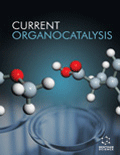
Full text loading...
We use cookies to track usage and preferences.I Understand
TiCl4 is a widely utilized reagent in organic synthesis, often functioning through Lewis’s acid-promoted transformations. This review explores the potential for TiCl4 to catalyse various examples, adhering to the classic catalyst definition and allowing for the use of sub-stoichiometric quantities of the catalyst relative to the substrate. The use of metal catalysts in organic synthesis has witnessed a surge in interest due to their ability to facilitate a wide range of chemical reactions. This review article highlights the significance of titanium metal catalysts via comparison with other metal catalysts like Pd (NO3)2, IrO4, Au/Fe2O3, SnCl2, and AlCl3. Among these catalysts, titanium tetrachloride (TiCl4) has gained considerable popularity for its cost-effectiveness, eco-friendliness, enhancing reaction efficiency, and ability to accelerate reactions while reducing reaction times. This comparison helps in determining the most suitable catalyst for different chemical processes, considering efficiency, safety, and economic factors. TiCl4 operates as a non-consumable catalyst, allowing for the use of sub-stoichiometric quantities relative to the substrate.
This review discusses TiCl4's applications, efficiency, and mechanisms in organic synthesis. It distinguishes itself by presenting new applications and comparative efficiencies of TiCl4, delving into detailed reaction mechanisms, and discussing its environmental, economic, and safety aspects. TiCl4's role in pivotal chemical reactions, such as Friedel-Crafts acylation and alkylation, epoxidation, cyclization, Mannich reactions, Suzuki-Miyaura reactions, Pechmann condensation, Knoevenagel condensation, anti-Markovnikov hydration, pinacol coupling, and Diels-Alder reactions. These reactions have led to the synthesis of biologically active compounds like zolmitriptan, ropinirole, risperidone, and rivastigmine. TiCl4-catalyzed reactions are characterized by their mild conditions, high efficiency, and selectivity, making them an attractive choice for modern organic cyclic, acyclic, and heterocyclic synthesis.

Article metrics loading...

Full text loading...
References


Data & Media loading...

